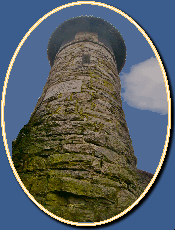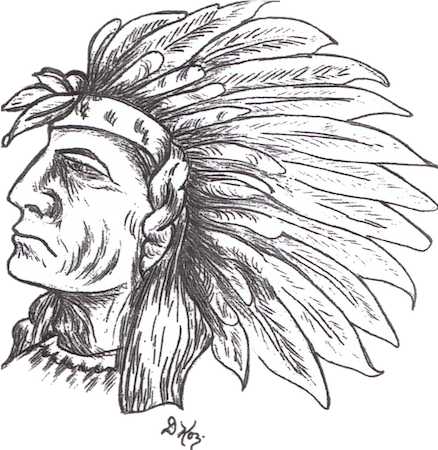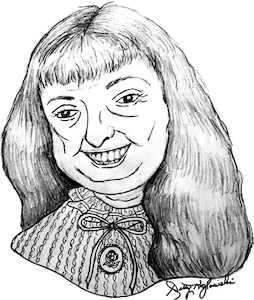Imagine the small coastal town of Milford, Connecticut inhabited only by Native Americans. The Wepawaug tribe, a branch of the larger Paugasset tribe resided in what is now Milford and Orange. Ansantawae the chief or sachem of the Wepawaug Indians along with his tribal council controlled the Indian village. Life was lived simply in small wigwams made of sticks and leaves, currency did not exist, nature provided much of their food, and English settlers had not set foot upon the land now Milford as of 1637. This all changed during the reign of King Charles I when increasing numbers of English people migrated to New England because they no longer accepted of the Church of England and were persecuted for their non-conformity (Harrington 2).
The Wepawaug tribe lived in present day Milford sites that were full of resources, mainly along the shoreline. Villages were set up at Charles Island, Indian Point presently (Gulf Beach), Poconoe Point( presently Laurel Beach), the Wepawaug River and Oyster River (Teachers 13). Their seaside location made Ansantawae’s tribe largely dependent on fishing, especially shellfish such as oysters and clams that flooded the shoreline. Milford residents still use the Sound shore as an important and abundant resource (DeForest 50). Large heaps of shells found along Milford’s coast give evidence of the Indians reliance on the water and its life (DeForest 50). Nevertheless Ansantawae’s tribe did not rely solely on Long Island Sound as a resource, as land was plentiful too. Milford’s wildlife proved bountiful with pigeons, quails, turkeys, partridges, cranes, geese, ducks and beavers to hunt for food, skins, and feathers. Though the Wepawaugs did not largely depend on agriculture, they were able to grow maize, tobacco and beans to support themselves. They also were known for gathering strawberries, blueberries and blackberries (Teachers 16). Ansantawae and his tribe were successful in drawing a healthful diet from the bountiful lands around the Wepawaug.
In May of 1637 the “Hector” sailed from London to Boston carrying John Davenport, Theophilus Eaton and others from London. It was followed by another ship weeks later carrying many of the original English settlers of Milford, including Robert Treat, John Sherman, Thomas Tibbals, John Fletcher and led by Peter Prudden (Harrington 2). Although they remained in the Massachusetts Bay Colony for almost a year, Davenport and Prudden had from the start desired to establish their own colony. In August 1637 on an expedition during the Pequot War, the region at the mouth of the Quinnipiac River in Connecticut was discovered and marked as a potential location for settlement. Davenport and company decided this was the place to settle their colony which would later become present day New Haven (Harrington 3). After the Pequot war, as the Connecticut and Massachusetts militia began to pursue the remnants of the Pequot tribe along the Connecticut coast, Sergeant Thomas Tibbals noticed the region above the mouth of the Wepawaug River. Using an old Indian trail that is today the Boston Post Road, Tibbals and his troops explored the area that is today Milford and appraised it as an ideal spot for settlement (Harrington 1).
On February 12, 1639 Edmund Tapp, William Fowler, Benjamin Fen, Zachariah Whitman and Alexander Bryan from New Haven journeyed to the area that Tibbals had explored ten miles west of the New Haven Colony and told Ansantawae and his tribe that they wished to purchase the Wepwaug land (Harrington 3). Ansantawae held a council with his tribe and together they decided to sell the land. As chief, Ansantawae was privileged to do what he wanted provided it would be for the good of the tribe (Teachers 14). Though convinced that selling the land to the English would benefit the Wepawaug tribe, Ansantawae still wanted the council’s support for such an important decision. The English settlers purchased the land ten miles southwest of the Quinnipiac River and all the land between the East and Housatonic Rivers for its eastern and western borders (Teachers 13), and Long Island Sound north to the “two mile brook” the land between Milford and Derby, (Harrington 2) for its southern and northern borders. The English settlers paid Ansantawae and the Wepawaugs six coats, ten blankets, one kettle, twelve hatchets, twelve hoes, two dozen knives, and a dozen small mirrors (Teachers 13). Ansantawae’s signature on the deed of the land was represented by a bow and arrow. Handing over the land was symbolized by the old English tradition of the “turf and twig” ceremony. Ansantawae along with his council Anshuta, Manamatque, Tatacenacouse and Aracowset took part in this ceremony (Teachers 14). The English gave Ansantawae and his men a piece of turf along with a stick, and they proceeded to stick the twig in the turf to symbolize the handing over of the land from the Indians to the English. Later on, in 1656, another considerable tract the settlers bought for twenty-six pounds; and three or four years subsequently, Indian Neck, lying between East River and the sound generally from present day Woodmont to Milford Harbor was purchased for twenty-five pounds (DeForest 269). A reservation was made by the Indians of twenty acres on the neck of the area near present day Gulf Beach, but they sold it about a year after for six coats, two blankets and a pair of breeches (DeForest 271). The Indians sold the land around the Wepawaug River in the hope that they would gain English protection against the Mohawks, who were continually raiding their territory (Harrington 5). The only land that remained in the ownership of the Wepawaugs and Ansantawae were their sacred sites of Charles Island and Gulf Beach.
During Ansantawae’s reign war broke out between the tribe and the Mohawks. (Teachers 18). Wars were common between these tribes. Before commencing with battle, ambassadors were sent to the enemy or sometimes a general council was held in preparation for the war (Teachers 18). In 1645 the Mohawks attacked the Wepawaug tribe. Fires were set around Milford causing the Wepawaugs and local wildlife to suffer. Ansantawae, as head of the tribe, led a large war party and pushed the Mohawks back (DeForest 239). The Mohawks returned in 1648, and in a swamp located near Wildermere Beach they hid themselves in an attempt to surprise the Wepawaugs. Luckily for Ansantawae and his tribe the English accidently discovered the Mohawks in the swamp and were able to notify the Wepawaugs of the Mohawks’ presence (DeForest 239). Since the English discovered the Mohawks prior to their planned attack, the Wepawaugs were able to raise a large force of armed men and successfully defeat the Mohawks.
There is a famous Milford story that tells of the Mohawk whom the Ansantawaes tied to a pole for the mosquitoes to eat alive. Thomas Hine, a Milford resident, found the Indian captive, gave him food and clothing, escorted him to the Housatonic River, put him in a boat and sent him on his way (Teachers 19).The Mohawks were well known for attacking the Wepawaug tribe on multiple occasions.. The Wepawaugs’ fort in Milford survived this attack in 1648, but was later destroyed in 1671 by the Mohawks (DeForest 269).
Of the places that the Wepawaugs still controlled, Ansantawae lived the remainder of his life on Charles Island along with his wife and sons in “the big wigwam” (Teachers 14). The Wepawaug Indians regarded the island as sacred ground (Guide 1). Although referred to as Charles Island today, it was once called Poquahaug by the Wepawaugs (The Curse 1). Ansantwaes’ lodge on Charles Island was richly furnished with furs, for whenever warriors or braves went hunting they brought their chief the prizes of their hunt (Teachers 14). The Wepawaugs were later lead by Ansantawae’s sons Tountonemoe and Ackenach. Tountonemoe died around about 1660 and Ackenach succeeded him (DeForest 269). After decades of controlling what is today southern New Haven County, Charles Island and Gulf Beach were the only land left to the Wepawaugs by the 1670’s.
Today Milford, Connecticut is the 6th oldest town in Connecticut thanks to the purchase of the Wepawaugs’ land by English settlers. The town now blooms with a population of 53,045 people mostly descendents of European immigrants.(Milford, CT profile). The Wepawaug tribe is remembered throughout Connecticut by the Wepawaug River that rises from Woodbridge and flows down to the sound through our town of Milford. The Masonic Lodge on the Milford green is named after the Wepawaugs’ great Chief Ansantawae, keeping the memory of the first leader of Milford, Connecticut alive



